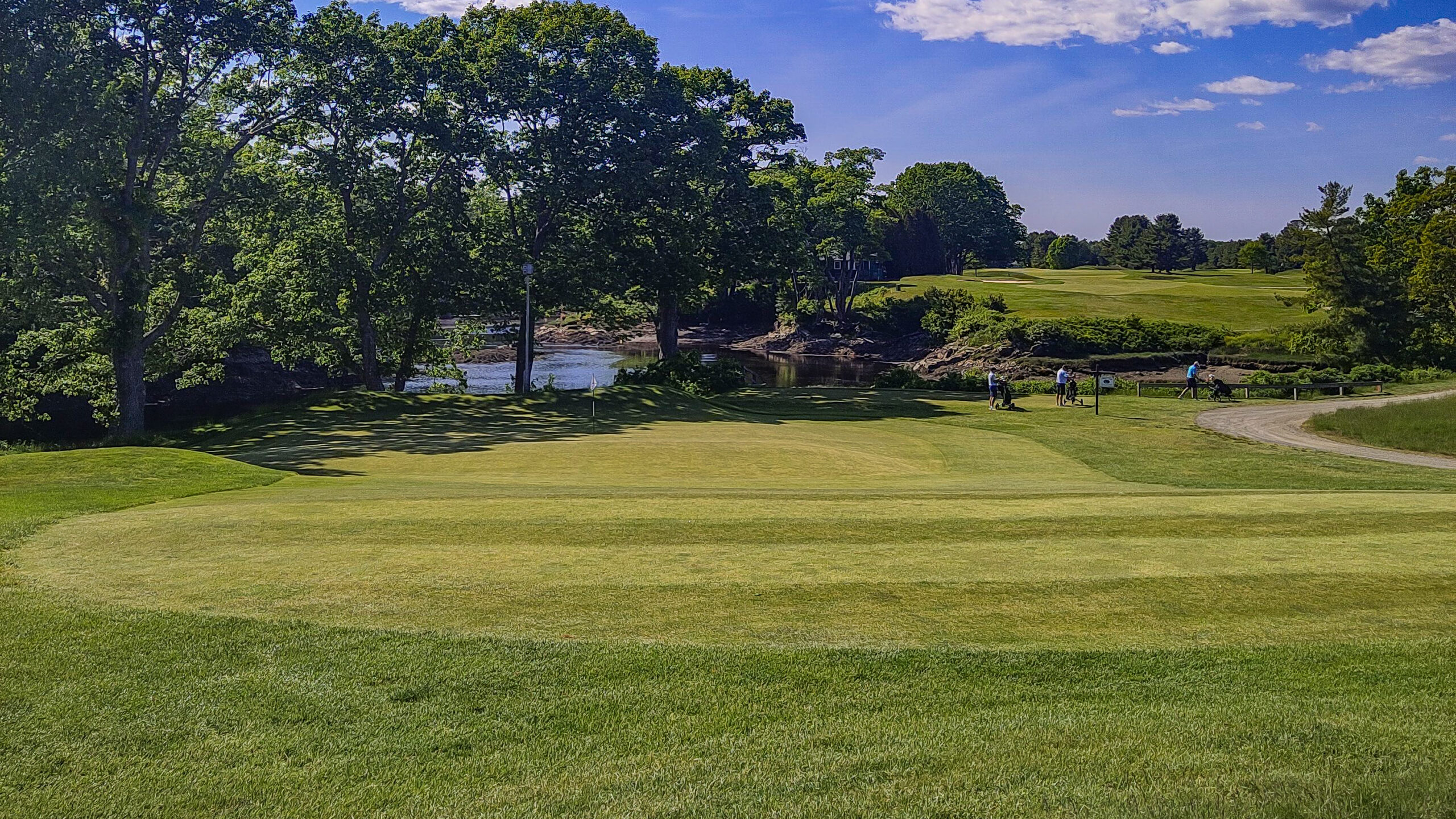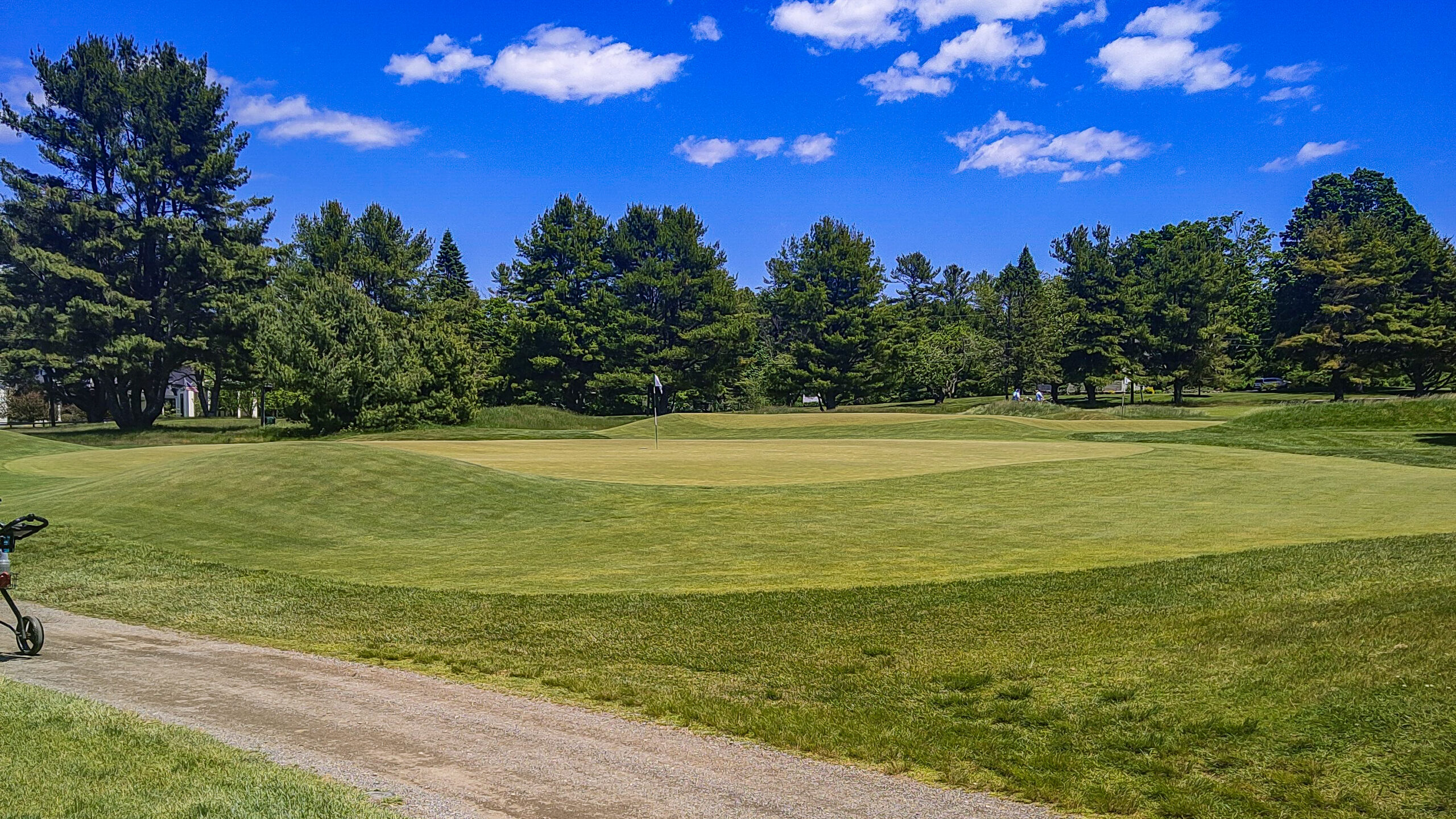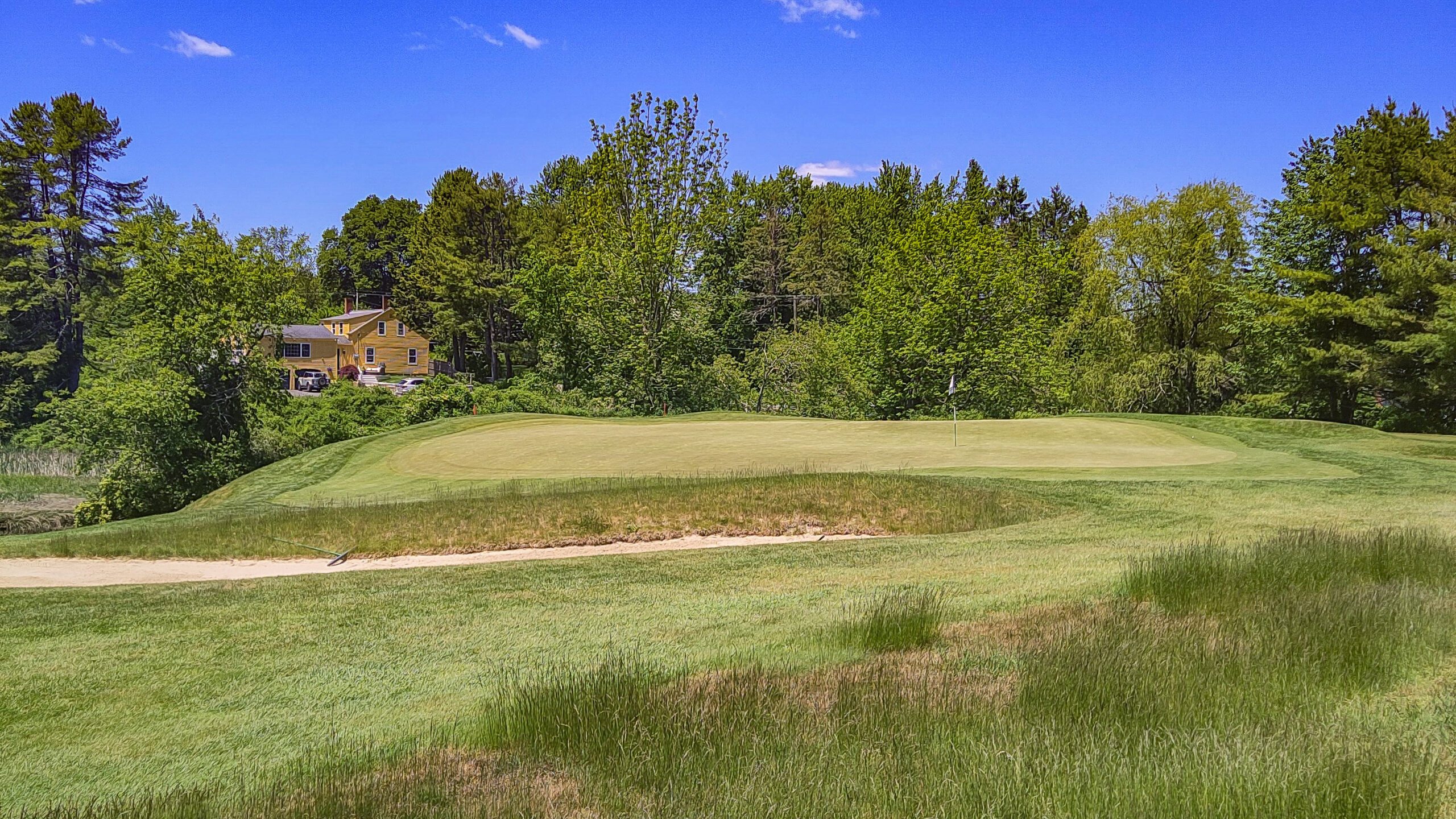Too commonly, regionalism gets correlated with inadequacy, as if because a practitioner’s work was mainly restricted to a certain area, then there must have been something wrong with it. Had it been first rate, such a mindset decrees, then the practitioner’s services would have been sought far and wide. Such an outlook is, of course, erroneous, and examples to the contrary are numerous. Walter Travis and the partnership of Wayne Stiles and John Van Kleek are two such cases, as both can be viewed as regional architects, having primarily plied their trades in the Northeast of the United States.
Yet Travis, as tends to happen with the vacillating nature of posthumous reputations, is going through a bit of a renaissance of late, with some younger firms explicitly citing his influence, if not outright borrowing his concepts. Conversely, though, the oeuvre of S&VK still seems to fly under the radar. There are a few reasons for this, including the fact that, according to Bob Labance who wrote a biography of Stiles, they weren’t interested in self-promotion, didn’t take on many big, expensive projects, and largely worked in smaller communities laying out simple and clever, yet low-key and lay-of-the-land golf courses. Taconic, in Williamtown, Mass, remains probably their best known and acclaimed golf course.
- The charms of Maine are eminently evident at both clubs. Cape Arundel’s 6th, pictured here
- The view from the 12th tee at Prout’s Neck
This past weekend, after plans to play a couple more known golf courses on Long Island fell through, I opted to return to Maine and play both Cape Arundel and Prout’s Neck. The weather could not have been better; and playing these golf courses, both of which measure under 6100 yards, on back-to-back days was an invigorating experience, for they share a number of similarities, as well as some discrepancies that illuminate not so much why S&VK were lesser architects but, more so, what makes Travis stand among the greatest to ever ply his trade in this field, particularly when faced with a limited, less-than-ideal site.
As evidenced by pioneers of Scotland, the best golf clubs are extensions of their communities, their ecosystems. Even those among the exemplary that are private, such as Cypress Point and Fisher’s Island, nevertheless manage to appropriate what makes their little corner of the world unique and precious. Golf is also a game that involves the five senses, and at both Maine clubs, they are activated in full vigor.
Founded in 1908, Prout’s Neck Country Club is located on the western side of the top bulge of an hourglass-shaped peninsula right along Ferry Beach, right where the Atlantic and the Nonesuch River meet. In mid summer, this is in the heart of beach tourist country. Yet, unlike in Myrtle Beach or on the Gulf Coast, this region of Maine, roughly ranging from Ogunquit to south Portland, still manages to maintain the cocktail of calmness, of gentleness, and of laidbackness that characterizes the area and its native inhabitants in non-peak season, when the clam-shacks are again boarded up, the hotels and motels are advertising vacancies and cheap rates, the beaches are left vacant to pigeons, the cold yet fruitful atlantic waters are solely the domain of the fishermen, and the sad, doomed, romantic day-dreams of the young locals are populated by tourists whose paths they crossed the previous summer, a time that already feels closed off, never to be bettered, but the remembrances of which are necessary to relive in order to survive the upcoming months of solitary winter. Due to the comparative lack of worldly amenities, such as national-chain hotels and massive shops, the area still feels very much back in time, a harbinger to the America of yesteryear, of mom-and-pop operations, boutique attractions, and less fuss.
Set right along the water, Prout’s Neck’s one-story, dark-green clubhouse is a subdued compound, with a small although well stocked pro-shop, an attached bag-shop, and a detached reception hall that was vacant at the time of my visit. Nearby, between the two-lane road that cuts through the peninsula and the clubhouse, are a number of grass court tennis courts, which also belong to the club but were also empty. From what I could gather, most of the membership hails from Boston and New York City; and Prout’s Neck is where they play while at their summer homes, to which most seemed not to have migrated yet. Of interest, too, is the range, which like Cypress Point’s, is rather exiguous, yet quaint and oddly appropriate, consisting of just a few mats from which no-more than wedges can be hit into an expanse of shrub-covered, roped off beach. In fact, a shank, if shaked badly enough, is quite liable to end up in someone’s Natty Light loaded cooler. Also, curiously, is that neither Prout’s Neck nor Cape Arundel feature a bar or restaurant on site; rather, they seem to be B.Y.O.B. establishments, which considering the tragic exchange rate currently, was fine for us unfortunate canadians. Once again, as with the best golf clubs, both seem to announce that this is a place to play golf, and just golf, quickly, astutely, respectfully, and sportingly.

In a Proustian manner, riding and intermingling with the salt-laden breeze, the dry, sandy pine smell harkened back to my experiences playing seaside golf, specifically at Cypress Point, as well as in the sandhills of North Carolina, when further away from the coast. Like that Californian club, Prout’s Neck is replete with a quiet, understated elegance that need not announce itself heavy-handedly. Unlike Dr. Mackenzie, however, S&VK opted to begin their routing right along the ocean, although, as with the Ocean Course at Kiawah, there is a dozen feet high sand dune, covered in wispy grass, which largely blocks the view of the Atlantic from the first two fairways and tees.
- The excellent 2nd at Prout’s Neck
- A tough target, especially into the wind
When considering how to best transport the golfer around the virgin tract of land, the architect must not only consider how to do so, but also when to expose him/her to its best aspects. In short, timing is as key as orientation. S&VK made the curious decision to immediately route their holes along the beach; as such, they risked somewhat dampening the effect of this striking exposure, once the golf course ventures inland beginning at the third. In truth, apart from the short 9th, which plays directly along an inland marsh and the green-site at the par 5, 11th, which is benched into a sand bank near the ocean, they were given very little to work with, in terms of micro undulation and distinct features, such as creeks and ridges. Yet, they made due with what they had, crafting an engaging test of golf, even at 6100 yards.
As someone whose best club is driver and who enjoys trying to grind a score every time I play (I don’t see the point of playing a sport and not trying your utmost to perform; if I shoot hoops, my goal is to make as many as possible, not merely to lay bricks and smile) sticking to my plan to solely hit driving irons, in order to deliberately lengthen the golf course, was hard to stick with, especially once I made a sloppy bogey at the par 3, 5th. However, I did enjoy the experience, and never felt this form of castrated golf to be lesser. Would I play like this everyday? No, but it was a nice change of pace, a leisurely exercise that felt at home considering the locale and vibe of the club and area.
- The 7th at Prout’s Neck
- The 10th at Prout’s Neck
Ideally, a golf course should borrow and integrate itself into its ecosystem, while also coyly enhancing it through its shaping and aesthetics. The Stiles Society notes his “that training and work as a landscape architect during his competitive golf years and subsequent golf architecture career instilled in him a strong understanding of the role of trees, sight lines and shading.” A perfectly flat parcel also requires, at least to a certain extent, for the architect to add vertical elements in order to better define the target and add definition. For the most part from tee-to-green, rather than mound the exterior of the playing corridors, as many architects would have, S&VK simply allowed the pine trees to define the corridor, with knee high grass beneath them. Like at Tom Simpson’s Chantilly near Paris, this, therefore, lends a real undisturbed feel to the product, as if it was merely placed upon the tract of land with no intention to disturb the ecosystem, like a boardwalk cutting through a nature preserve. Apart from some narrowness, few tee shots are likely to raise one’s blood pressure.
- The nerve racking 9th at Prout’s Neck
- The charming 12th at Prout’s Neck, which had its fairway wash away in the spring
Yet, such a sleight of hand, especially when traversing a similar segment of the property, also risks becoming monotonous, since most of the par 4s here feature just one fairway bunker, usually cut along the inside corner of the dogleg. The 3rd, 4th, 6th, and 7th all, more or less, feature a play upon this trope. By the time one walks from the 7th green to the 8th, you begin to desire a different look and strategy; luckily, though, such a change of pace occurs, as the routing remmerges from the interior pine-tree hewn segment to the more open, coastal land until the 15th.

The uber-cool saddle green on the 13th at Prout’s Neck
However, where Travis surpassed S&VK — as well as just about every architect — was from 50 yards and in. As with its tee shots, the look of the approaches and the green complexes at Prout’s Neck tend to get slightly repetitive, apart from a few exceptions. Standing in many of the fairways, one faces, what feels like a dozen times, both a bunker right and left of the green, with either a single raised peak or another bunker punctuating the background of the green complex, most of which slope heavily from back to front. In terms of interior constitution, S&VK favored broad, rolling undulations, with front run offs of various intensities. They aren’t boring or undercooked; rather, most are simply obvious and unfussy, with few putts likely to confuse the golfer or leave him second guessing while considering the stroke. What you see is what you get for the most part. However, the angled and sand-ridge benched 2nd, the saddle shaped 13th with a bunker cutting into the right edge, and the perched and severely false fronted 14th stand out among the set, although it’s hard not to wish that there were a few more such complexes, both in terms of novelty and intensity, when hitting into and once putting upon them.
- Cape Arundel’s peninsula 13th
- The hidden and devilish 17th at Arundel
No hole is an island (pun intended). Each individual hole, within a routing, forms a small part in what should be a cohesive whole, playing upon one another, off of one another, and, of course, complementing one another. Ideally, to reposition, or to eliminate, merely a single hole should have a significant effect upon the affect of the entire routing, on the entire whole, as happened when Banff changed its routing or would happen if a similar exercise occurred at Cypress or at Augusta. However, as with star players in team sports, individual holes, viewed as isolated entities, occupy a disproportionate volume of the discourse surrounding golf course architecture. This obsession upon the single hole is, of course, not a phenomena borne yesterday; rather, it can be traced back to the advent of the “signature hole”, if not earlier. However, because of the craze of the “collage” on instagram, wherein the creator’s most tasteful pics are posted at random, without consideration for their actual positioning in their course’s routing, combined with the craze around templates, the study of how an entire golf course works as a cohesive unit seems to have lost importance. Moreover, the “spotifying” of music, where albums are now immediately picked apart by the listener for their two or three best moments, and not consumed as an arc with building and descending rhythms and cadences and themes from one song to the next, is also likely to blame for this.
To study Cape Arundel hole-by-hole, therefore, is a futile and ill-sighted exercise, although there are some individual features that merit close consideration. Yet what makes the golf course truly stand out is how all of the individual parts play upon each other. Travis’ greens, everywhere but especially here, are jewels to behold; and they are atypical of Travis’ modus operandi of green construction, focusing upon four “turning points”: front right and left; back right and left. All of his typical deflecting swales, perched platforms, rolls, knobs, and broader sloping pads are to be found. Once again, in an era gone mad for superfluous shaping, it is nice to be reminded that the most fruitful undulations for play reside between three inches or so and a foot.
- Arundel’s low-lying 1st green
- Arundel’s mowing lines cleverly activate Travis’ external contouring
And, unlike at some newer golf courses whose greens are turned up to ten from 1st to 18th, rarely are two such complexes presented here. Rather they build up, slowly and consistently, to a few crescendo moments, these being the 3rd, 6th, 8th, 11th, and 17th (perhaps one could argue that the 10th and 12th could also be considered as such). The first four holes offer exhibit A of this gradual progression: the 1st green, which is set well below where most golfers will land their tee shot if they hit less than driver, is tame by Travis standards, a gentle handshake replete with a few-inch high false front, a gently waving middle pad, and a bank at the back which can prevent balls from running through; the small green at the 2nd, located merely steps from the 8th green and 9th tee, features a run off short left and a raised quadrant at the back, yet the target is broad considering that wedges are mostly hit into it and the surface, itself, is slightly more intense than the previous one; immediately afterwards, however, the aesthetic par 3, 3rd, immediately strikes fear into the golfer, with how its lofty false front appears ready to feed under-hit balls into the river left and, above it, an even higher back pad looms. And once safely putting upon the surface, it doesn’t get any easier, either. In effect, the first two had been building up to this moment; yet the 4th, which is blind from the tee, releases the tension, with a wide approach and an extensive surface that gently slopes away from the fairway and into which low running approaches are thus encouraged.
- The tee shot on the 3rd
- Approaching the green
- Travis’ usual flair
Apart from the greens, where Arundel and Prout’s Neck are far different is in their various aesthetics from the tee. The latter is, in essence, right there, announcing itself in full view, loud and clear with no frills; whereas Cape Arundel is a trickster, forcing the golfer to be constantly off balance, with its embrace of blindness and fairways above the level of the tee box or obscured around corners. Travis’ touch is also far more evident than S&VK’s with plenty extrinsic shaping, often in the form of chocolate drop mounding and sharp banks. The playing experience here feels far more defined and stipulated by the architect, wherein one feels as if they are hitting from specific spot to specific spot, like a game of steeplechase, rather than just hitting and chasing the ball, as is the case at Prout’s Neck.
- Arundel’s 5th
- Arundel’s 9th, a welcoming approach for the lone par 5
All in all, regardless of their differences in aesthetic and modus operandi, the best compliment I can give both is that they are fun, above all; and that they embrace the defining characteristic of the region, where folks, then as now, come for rest, relaxation, and quiet away from the hum and buzz of city life. Their shorter lengths equate to quicker rounds; their lesser pars to lower numerical scores. Seems like a winning combination for destination golf to me.


























You missed an opportunity to reference Travis built two clubs in 1922 – Arundel and Lookout Point. Some fun comparison of both, including the mounding on 13 and 14 at Arundel that mirror the same on Lookout’s 14th and 15th. There’s an odd familiarity for those who’ve played both courses.